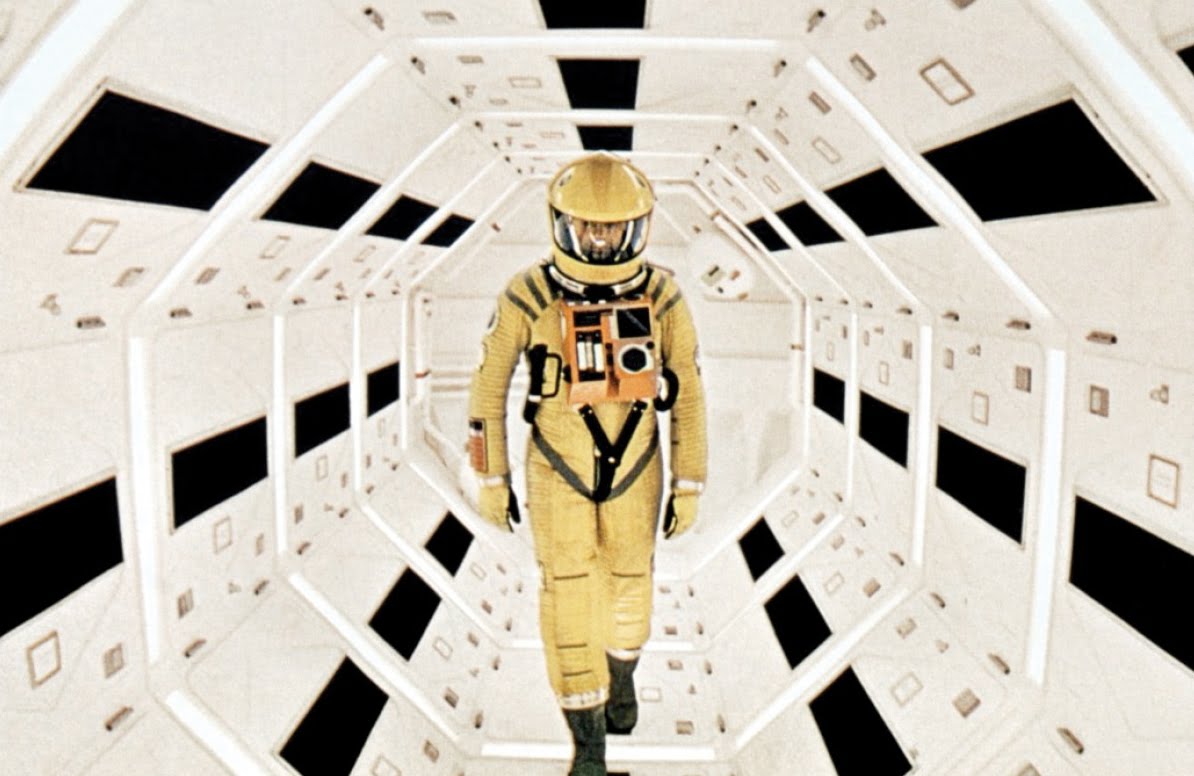2001: A Space Odyssey

Stanley Kubrick
UK / USA – 1968

Screenplay: Stanley Kubrick, Arthur C. Clarke
Cinematography: Geoffrey Unsworth
Production: Metro-Goldwyn-Mayer Stanley Kubrick Productions
Language: English, Russian
Duration: 149 min
Color: Color
Synopsis: Is life on Earth the result of an accidental combination of carbon-fixing mechanisms, and do those mechanisms—organic matter—grow, survive, and evolve for some greater purpose than mere existence? When a large black monolith is found beneath the surface of the moon, the scientific community assumes that it has been intentionally buried, left as a guiding marker by a superior alien intelligence. An interplanetary expedition comprised of the brightest minds is mounted on a state-of-the-art spacecraft, the S.S. Discovery, to determine the point of origin of the mysterious artefact. It is assumed that the quest will bring the crew in contact with higher knowledge, perhaps to the next stage of evolution, but little do they know that on their very ship the self-adaptive Artificial Intelligence HAL 9000, a human-made supercomputer in charge of life support and navigation systems, is developing its own form of rudimentary self-awareness. For the synthetic entity HAL and captains Dave Bowman and Frank Poole, survival and evolution may not need advanced alien intervention, as they learn that for all of its techno-scientific hubris, the human species is still very much in its infancy.

Notes:
The final sequence of 2001: A Space Odyssey stirred countless speculations on its ‘message’. Early reviews complained about the non-narrative structure of the film, lamenting the fact that audiences could not understand the director’s intentions. In rejecting this approach, Kubrick told an interviewer that “once you’re dealing on a non-verbal level, ambiguity is unavoidable. But it’s the ambiguity of all art, a fine piece of music or a painting – you don’t need written instructions by the composer or painter accompanying such works to ‘explain’ them. ‘Explaining’ them contributes nothing but a superficial ‘cultural’ value which has no value except for critics and teachers who have to earn a living … In this sense, the film becomes anything the viewer sees in it.”
This film is truly remarkable as an experience for the senses, one of stunning visual and aural complexity. At a screening of the film a mere ten years after it was completed, Martin Scorcese observed that copies of Kubrick’s film were already becoming afflicted with color deterioration, indicating a slow and, at the time, irreversible fade to magenta. This forced Scorcese to write a now historic open letter to the Eastman Kodak company, urging them to take film restoration seriously and to seek alternative ways of preserving motion pictures. In the mid-1990s Turner Entertainment undertook a restoration of the 70mm print, which audiences saw in a limited re-release of the iconic science fiction masterpiece. This expensive undertaking was done with Kubrick’s direct involvement, and served as the source of the digital restoration that was completed in the second decade of the new millennium.
Notes drawn from Gelmis, Joseph. The Film Director as Superstar, New York: Doubleday, pp. 303-304, and Usai, Paolo Cherchi. Death of Cinema. British Film Institute, 2001.


